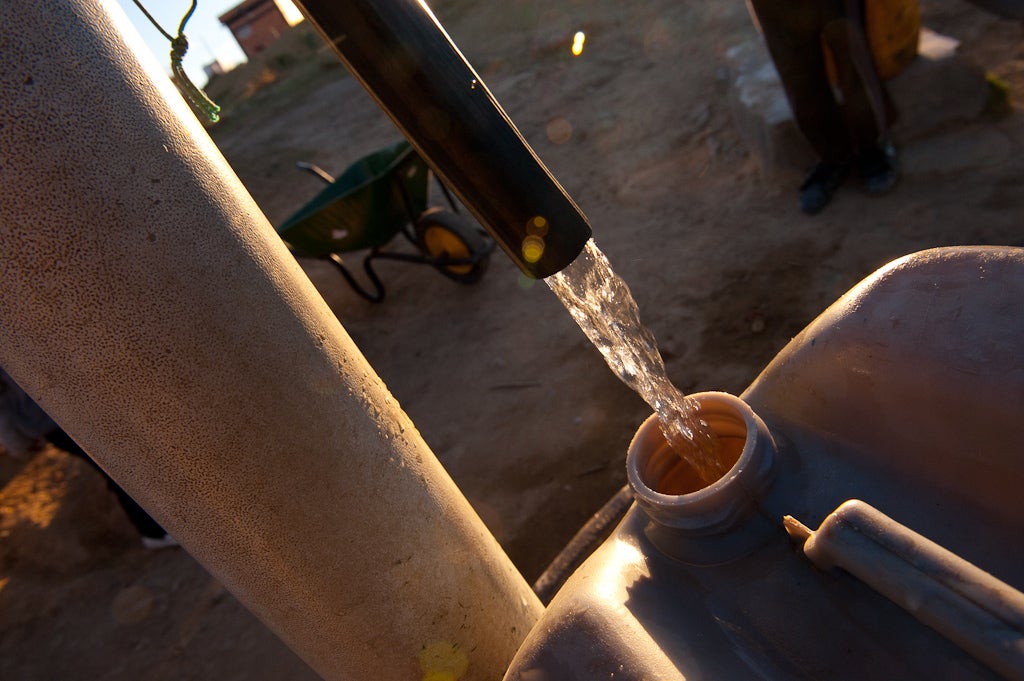Mamtoai puts her blue token key into the slot of the standpost and out flows water.

The installation of pre-paid water standposts that provide piped and treated water in Ha Thetsane is recent. The distance to a communal tap, installed long ago when the area was a rural settlement, used to be far longer. If pipes or taps were broken, water would be lost and turn the earth floor into mud. The cost of water tanked by local entrepreneurs to these peripheral areas could vary hugely - invariably much higher than the formal regulated water system. To expand water distribution, Lesotho’s largest utility the Water and Sewerage Company WASCO has installed water standposts into areas like Ha Thetsane.
In 2004, WASCO begun piloting the use of the pre-paid water standposts in six peri-urban communities and villages. These were part of the Lesotho Water Sector Improvement Project supported by the World Bank. The pilots were controversial in the beginning, with many questioning residents’ ability and willingness to pay and assuming that standposts would be vandalised.
In Seapoint, another area of Maseru, Chief Serk says that it is his community’s responsibility to replace the broken plastic hose used to direct the water from the standpost into containers. With the token system, he also says that everyone uses as much water as they have paid for. Contrary to the scepticism, communities have welcomed the lower costs and are in many areas involved in maintaining the standposts.
 Shortages still pose a challenge for the city during the dry season. But as Chief Serk highlights - at least water is not lost from the standposts as it was before when water would flow uncontrolled if a tap was broken or not shut tight.
Shortages still pose a challenge for the city during the dry season. But as Chief Serk highlights - at least water is not lost from the standposts as it was before when water would flow uncontrolled if a tap was broken or not shut tight.
The blue token key isn’t cheap – it costs 150 Maloti, equivalent to $19. But for only 8 lisente (about one US cent) a standpost will pour you 20 liters of water that fills up the standard container. The token is easy to carry and share, and can be recharged at a local petrol station or the WASCO head office. Some households overcome the initial high cost of the token by banding together to purchase and share a single token to serve several families.
Mamtoai in Ha Thetsane sighs and wishes that the standpost were closer to her home. People’s first choice is to have water delivered inside their houses. But this has long just been a pipe dream. Now, however, residents have begun to request and pay for household connections to the expanded network needed to install the water standposts.
As a result, more options of delivering water are now possible. The water standposts have become a countrywide method to introduce water services to peripheral areas in Lesotho and further expansion is already on the way.


Join the Conversation